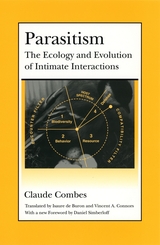
WEIGHT: 58 kg
Breast: C
1 HOUR:100$
NIGHT: +50$
Services: Dinner Dates, Cum on breast, Fisting anal, Trampling, Fetish
While this first event successfully brought together many academics and writers from various backgrounds, countries and disciplinary fields, it appeared that the call for papers attracted studies mostly concerned with dwellings of enchantment outside of cities. For, as opposed to what modernity has often wrongly entailed, nature does not evolve solely starting on the outskirts of our urban dwellings but has instead become an integral part of the daily lives of a majority of humans, living in densely populated areas.
As over half of humanity now resides in urban places——a tendency that has been predicted to keep growing on the increase——, nonhuman life forms have simultaneously been coevolving with us in environments that can no longer be conceived of as antagonistic to the notion of nature.

In more or less visible ways, vegetal, animal, elemental, and microbial agencies have followed the roads we have paved, adapting to and, in turn, shaping our shared urban habitats, sometimes even encroaching upon the more intimate dwelling places of our bodies.
If so-called moderns seek shelter in the notion of a civilized dwelling place keeping wilderness at bay, such an anthropocentric vision remains blind to the hardly controllable coexistence of myriad life forms within our gridded, sometimes walled or gated, shared, urban and suburban pluriverses. Suffice it to mention the pullulating of coyotes in North American suburbs, of spotted hyenas in Ethiopian cities, of foxes in all European metropoles, of raccoons in Parisian forests, of parakeets vividly coloring the sky in Brussels, of Geckos nesting on the walls of our homes in Spain and India——or in Perpignan for that matter——and the less glamorous domestic intrusions of cockroaches, ants, or other insects in our urban ecosystems to heal from the delusional idea of a dichotomy separating humans and cities from nonhumans and natural environments.

Moreover, while some of these feral animals tend to first be considered as a pestilence or jeopardy, in many cases local communities have been finding ways to reconsider the potential intra-actions between various populations — whether they be part of the vegetal, animal or human worlds — in ways forcing humans to adapt to nonhuman agencies, and reciprocally. As for plants, the wild proliferation of weeds, the cultivation of city parks, balconies, greenways, gardens etc.



































